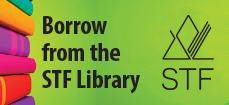Use a variety of ways to represent understanding and to communicate ideas, procedures, stories, and feelings in a clear manner with essential details.
| (a) |
Design a visual representation (e.g., a picture, puppetry, a chart, a model, physical movement, a concrete graph, a pictographic, a demonstration, an advertisement for a toy) to demonstrate understanding. |
| (b) |
Select and use task-relevant before, during, and after strategies when using other forms of representing to communicate meaning. |
| (c) |
Understand and apply the appropriate cues and conventions (pragmatic, textual, syntactical, semantic/lexical/morphological, graphophonic, and other) to construct and communicate meaning when using other forms of representing. |
| (d) |
Follow a model to communicate ideas and information about a topic. |
| (e) |
Consider and choose appropriate text form (e.g., a play, a model, a diagram) to represent ideas and stories. |
| (f) |
Combine illustrations and written text (e.g., captions, labels) to express ideas, feelings, and information. |
| (g) |
Use sound or movement to demonstrate understanding. |
| (h) |
Construct three-dimensional objects to clarify ideas and understanding. |
| (i) |
Create dramatizations to express ideas and understanding. |


Set in a small American town prior to the civil rights movement, the theme of segregation in this video offers opportunities for discussion of issues or discrimination and racism.


